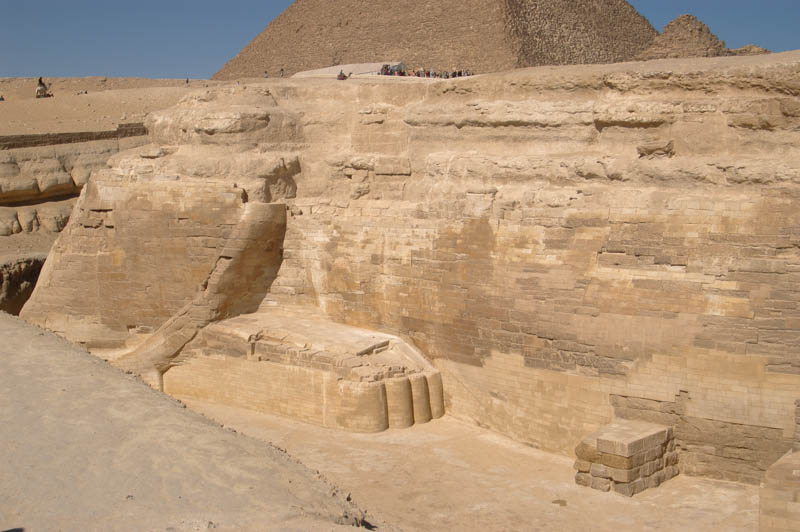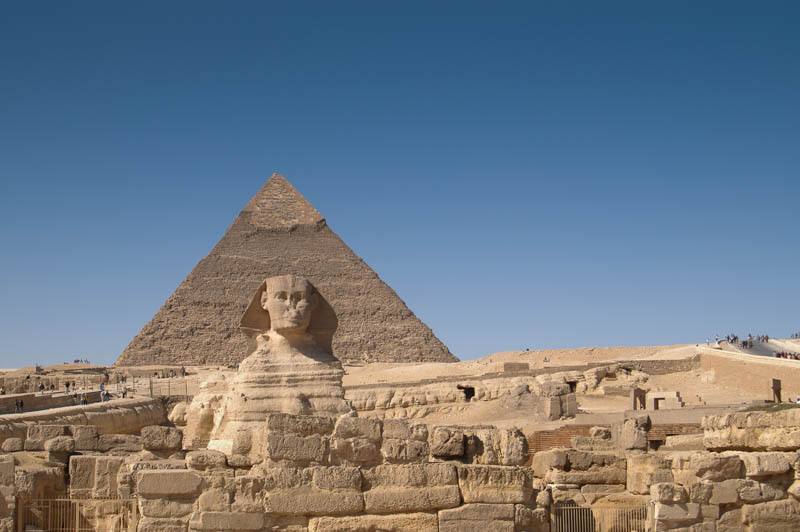
Besides the pyramids, the Sphinx is probably the best known monument in Egypt. It is also one of the most controversial — theories of its origins range from Chephren, pre-dynastic Egyptians, to aliens. Conventional archeology dates it to the reign fo Chephren, and that the face on the Sphinx is a representation of him.
The sphinx is badly ruined and ineptly repaired over the centuries. A huge outcropping of stone was carved to create the human-head and lion body. Unfortunately, the body of the sphinx was softer stone, and has eroded dramatically.

Some Egyptologists now claim that the sphinx may be as much as 2600 years older than we thought, they base this idea on the erosion of the body of the sphinx, which tyhey cleaim was during a period of heavy flooding and rain (the Nabtian Pluvial Era, 3000-1200 BCE).In the 19th century, it was assumed to be older than the pyramids, simply because it looks older — the weathered face and body imply that it has been around longer. In fact, a stele found on the Giza plataue has been read to say that Cheops ( Chephren’s predecessor) built his funerary temple beside the sphinx, implying that it was already there at the time — the stele is current considered to be from a much later dynasty.
Most other egyptologists dismiss this theory as fanciful — in most theories, the erosion of the sphinx was caused by mineral salts and the wind. In fact, had the Sphinx not been buried in sand for most of its long life, it would have long since disitnigrated. In fact, if the sand is not cleared away, it can fill up the basin where the sphinx lies in less than twenty years.
